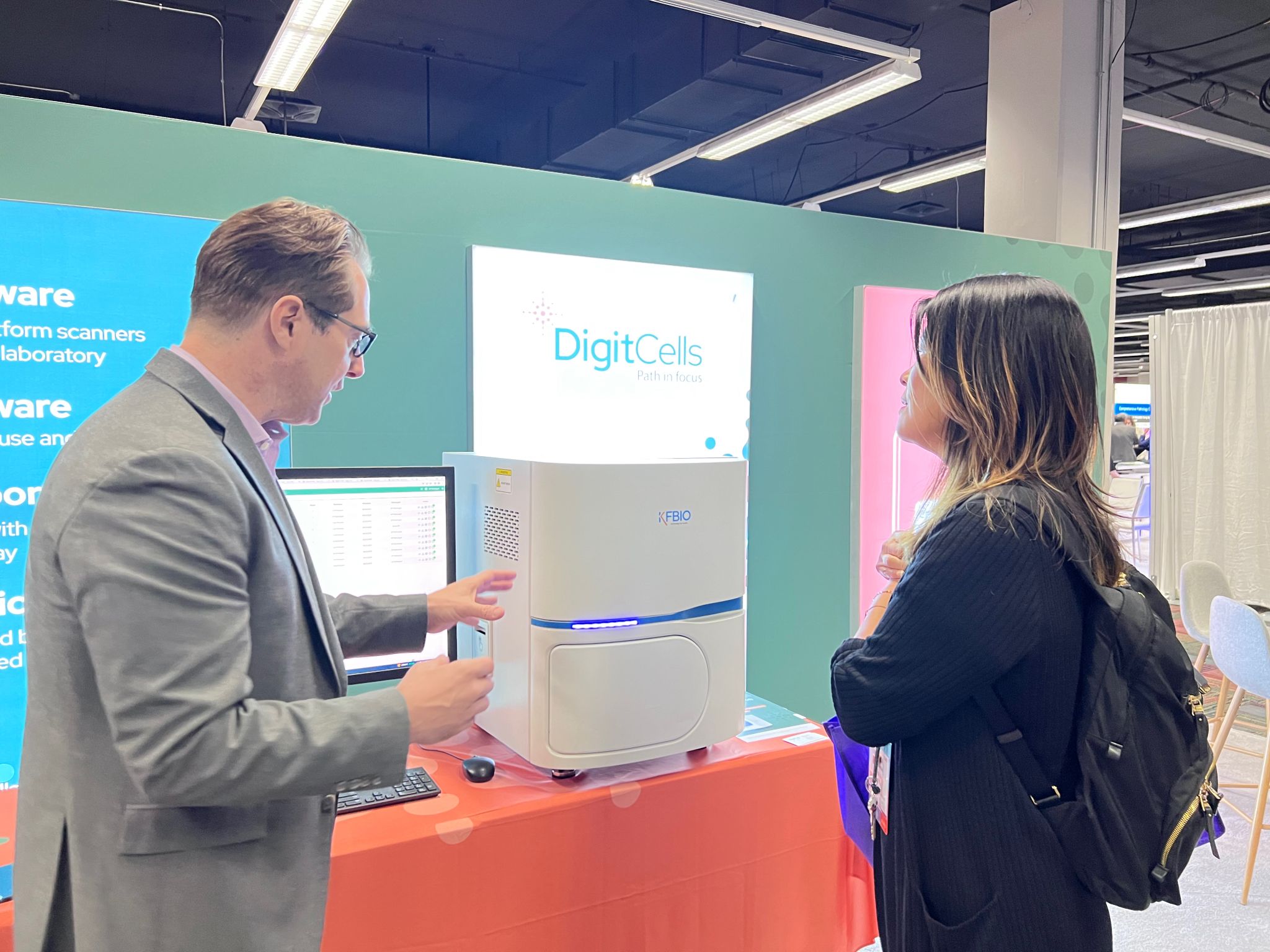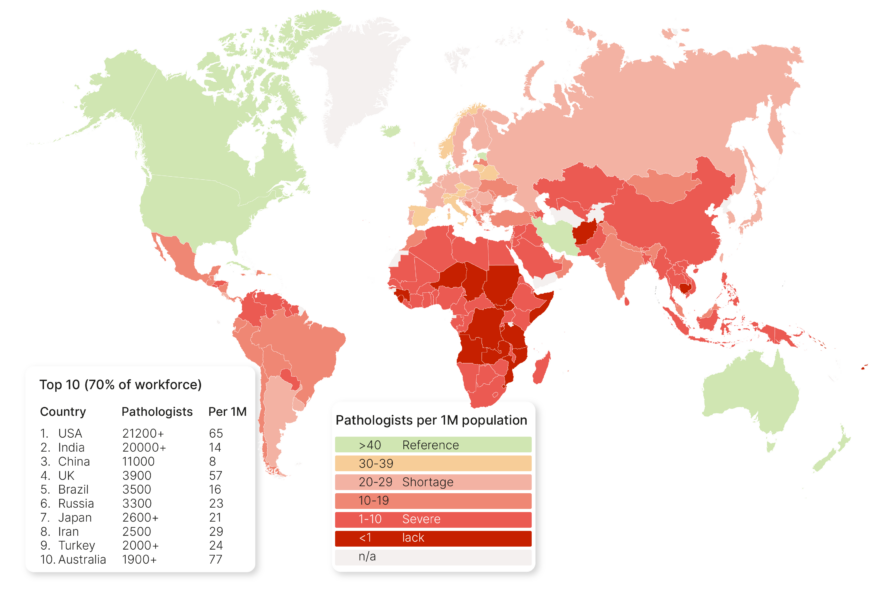Abstract: As digital pathology revolutionizes laboratory workflows, ensuring data integrity and accuracy becomes paramount. This paper explores proactive testing strategies for laboratory information systems (LIS) and image management systems (IMS) to address this crucial need. We delve into strategies like data quality assurance, data profiling, continuous data validation, and test-driven development (TDD), emphasizing their importance in maintaining data integrity for accurate diagnoses and optimal patient care.
Introduction: Imagine a future where laboratories seamlessly collaborate, instantly accessing and sharing pathology images and data. This interconnected ecosystem holds immense potential for research and improved diagnostics, but its success hinges on one critical factor: data integrity. Proactive testing emerges as a linchpin in this future, safeguarding data accuracy and ensuring reliable decision-making.
By proactively identifying and resolving configuration errors in LIS and IMS, we can prevent errors from reaching patients and empower laboratories to operate with utmost confidence. This article explores various proactive testing strategies and highlights their practical implementation, paving the way for a secure and efficient future in digital pathology.
Initiative-Taking Testing Strategies for Digital Pathology, step-by-step:
- Data Quality Assurance (DQA):
- Establish data quality standards: Define clear and consistent protocols for slide preparation, image capture platforms, file formats, and data integrity checks.
- Implement data monitoring tools: Leverage software solutions to continuously assess image quality, identify anomalies such as blurry images or missing scan areas, and trigger alerts for prompt corrective actions.
- Data Profiling: Understand your images.
- Analyze image structure and content: Identify data quality issues such as variations in brightness, contrast, and color balance.
- Conduct regular profiling exercises: Monitor changes in image characteristics and proactively address potential issues that could impact diagnostic accuracy.
- Continuous Data Validation: Maintain quality.
- Implement data validation rules: Define comprehensive rules within the LIS/IMS to ensure data integrity and consistency for diagnoses, annotations, and clinical information.
- Employing anomaly detection algorithms: Utilize advanced algorithms to identify unusual patterns in digital pathology data, enabling early intervention and preventing potential errors.
- Test-Driven Development (TDD): The TDD approach is effective for a variety of problem solving.
- Apply TDD principles: Design and configure digital pathology platforms with a testing-first approach, ensuring proper data handling and processing throughout the development lifecycle.
- Early identification of potential errors: TDD helps to identify and address potential errors early in the development process, minimizing downstream risks and ensuring robust platform functionality.
Defining Data Quality Standards: A Foundation for Consistency
The journey towards data integrity begins with the establishment of clear and measurable data quality standards. This process requires a comprehensive review of the entire laboratory workflow, meticulously analyzing each stage, from slide preparation and image capture platforms to file formats and the integration of external data sources, such as radiology images and requisition forms. Based on this analysis, specific and quantifiable standards are formulated for each element, ensuring unwavering consistency and data integrity throughout the entire digital pathology workflow.
- Identifying Image Monitoring Tools: Continuous Vigilance for Quality
- The selection of appropriate image monitoring tools plays a crucial role in proactive testing. These tools must be compatible with the laboratory’s specific image types, workflows, and volume of data. Real-time image quality assessment capabilities are essential, enabling the detection of subtle anomalies such as blurry images or missing scan areas. Additionally, advanced anomaly detection features offer an extra layer of security, identifying unusual patterns that might elude the naked eye. While open-source options like QuPath offer cost-effective solutions, vendor-specific tools can offer tailored functionalities that cater to specific laboratory needs.
- Developing Data Validation Rules: Automating Accuracy
- To ensure the accuracy and consistency of digital pathology data, comprehensive data validation rules must be established. These rules encompass all aspects of the data, including image annotations, diagnoses, timestamps, and associated clinical information. Leveraging automation through implementing the rules within the LIS/IMS system streamlines the validation process, enhancing efficiency and minimizing the risk of human error. However, it is crucial to regularly review and update these rules to ensure their effectiveness and adaptability to evolving digital pathology practices.
- Conducting Regular Data Profiling: Unveiling Hidden Trends
- Proactive testing goes beyond simply identifying and correcting immediate errors. Regular data profiling exercises are essential for uncovering subtle trends and patterns within the data that may hint at potential issues impacting diagnoses or workflow efficiency. By analyzing the structure and content of digital pathology data at regular intervals, laboratories can gain valuable insights into their data quality and proactively address any emerging concerns before they escalate into bigger problems.
By meticulously implementing these proactive testing protocols, laboratories can establish a robust foundation for data integrity and accuracy within their digital pathology workflows. This translates to improved patient care, enhanced confidence in diagnostic decisions, and ultimately, a more secure and reliable future for digital pathology.
Real-World Example: The practical benefits of proactive testing are exemplified by a recent experience. During the implementation of a digital workflow, data quality checks were integrated into the customer’s quality control procedures. This led to the identification of data discrepancies that conflicted with the department’s standard protocols. With minimal investigation, these anomalies turned out to be errors in LIS system settings. By actively identifying and addressing these discrepancies, the customer ensured the integrity and accuracy of their digital pathology data, preventing potential errors from impacting patient care.
This case study demonstrates the effectiveness of initiative-taking testing in uncovering underlying issues that may go undetected during routine operations. By proactively seeking out discrepancies and inconsistencies, laboratories can address potential problems before they escalate and impact patient safety. The proactive approach can significantly enhance data quality, improve diagnostic accuracy, and contribute to better patient outcomes.
Challenges and Strategies: Integrating proactive testing into existing workflows can be challenging, requiring changes to existing processes and procedures. To overcome potential resistance:
- Involve staff in the planning and implementation process: Encourage active participation from staff to foster ownership and understanding of the benefits of proactive testing.
- Provide comprehensive training and education: Equip staff with the necessary knowledge and skills to effectively implement and utilize proactive testing strategies.
- Develop clear guidelines and procedures: Establish clear and concise guidelines and procedures for implementing and conducting proactive testing, ensuring consistency and effective execution.
- Address potential resistance to change: proactively address concerns and anxieties through open communication, emphasizing the benefits of proactive testing for improved data quality and patient safety.
Proactive Strategies: Provide ongoing training and support: Ensure staff receive continuous training and support to maintain their skills and stay updated on the latest advancements in proactive testing methodologies.
- Engage key stakeholders: actively engage key stakeholders in the planning, implementation, and evaluation of proactive testing initiatives to ensure alignment with overall laboratory goals and objectives.
- Monitor and evaluate effectiveness: regularly monitor and evaluate the effectiveness of proactive testing strategies, identifying areas for improvement and adapting approaches to optimize data quality and workflow efficiency.
- Allocate resources: dedicate adequate time, budget, and personnel to support the implementation and ongoing maintenance of proactive testing initiatives.
- Invest in appropriate software tools: choose and implement appropriate software tools that cater to the specific needs and workflow of the laboratory, ensuring compatibility with existing systems and data formats.
Progression: The Future of Digital Pathology with Blockchain and FHIR.
The future of digital pathology lies in interconnected laboratory networks where data integrity and security are paramount. Emerging technologies such as blockchain and Fast Healthcare Interoperability Resources (FHIR) play a crucial role in this future. Blockchain offers an immutable and transparent record of all data transactions, guaranteeing data integrity and security, and fostering trust and collaboration within the pathology ecosystem. FHIR enables seamless exchange and integration of healthcare information between various systems and applications, fostering interoperability and facilitating collaboration between laboratories, healthcare providers, and researchers.
Several companies have already embarked on pilot studies exploring the integration of blockchain and FHIR into laboratory workflows, demonstrating the potential for significant advancements in data quality and security. As these technologies mature and become more accessible, pathology informatics experts are actively working to develop user-friendly systems that empower all laboratories, regardless of size or resources, to leverage these game-changing tools. By embracing proactive testing and capitalizing on the power of blockchain and FHIR, we can unlock a future where data integrity, security, and interoperability are no longer aspirations, but the very foundation of a thriving and efficient pathology ecosystem.
Conclusion: By embracing proactive testing and leveraging these groundbreaking technologies, we can unlock a future for digital pathology where data integrity, security, and interoperability are the foundation of a thriving and efficient ecosystem. Laboratories that proactively address data quality challenges through effective testing strategies will be best positioned to leverage the full potential of digital pathology for better diagnoses, enhanced research efforts, and improved patient care.
Summary: Successfully implementing proactive testing in digital pathology requires dedicated resources, specialized expertise, and appropriate software tools. Qualified personnel with a strong understanding of digital pathology and data quality assurance are essential to design, implement, and maintain effective testing strategies. Laboratories should also allocate dedicated time and budget for testing and invest in appropriate software tools to ensure optimal data quality and workflow efficiency. By taking these steps, laboratories can unlock the full potential of digital pathology and contribute to a future of improved healthcare for all.
Author
Scott Kilcoyne
DigitCells Cofounder & COO





